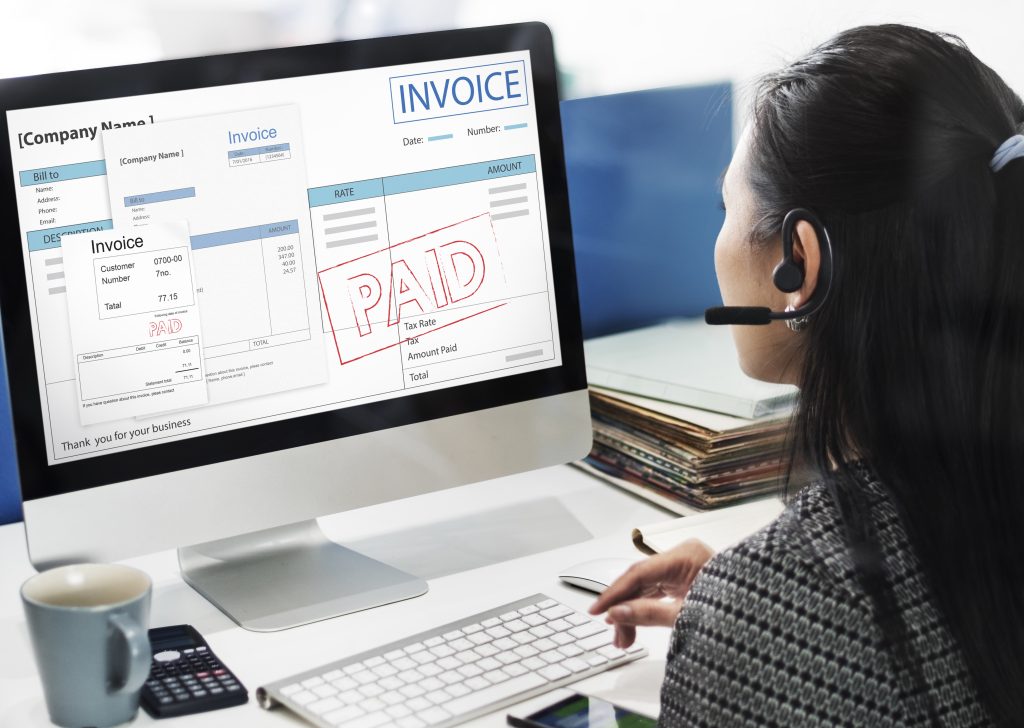Introduction
Every thriving business relies on a healthy cash flow. One fundamental component that ensures this is accounts receivable—the money owed to your business by customers for goods or services that have been delivered. This comprehensive guide will answer ‘What Is Accounts Receivable’, explore the latest statistics, break down the accounts receivable job scope, and highlight essential accounts receivable skills. If you’re a business owner in Singapore, you’ll also discover how expert accounting and GST services, such as those offered by DTL Accounting Group, can streamline your financial operations.
What is Accounts Receivable?
Accounts receivable represent the money owed to a business by its customers for goods or services that have been delivered on credit. Think of it as a formal IOU system where companies track pending payments from their clients. When you sell products or services and allow customers to pay later, you’re essentially creating an accounts receivable entry.
This financial component appears on your balance sheet as a current asset because you expect to collect these payments within a year. The accounts receivable process involves several key steps: issuing invoices, tracking payment due dates, following up on overdue accounts, and ultimately collecting the money owed.

For Singapore businesses, proper accounts receivable management becomes even more critical given the competitive market landscape and regulatory requirements. Companies must balance maintaining good customer relationships while ensuring timely cash collection to support ongoing operations.
Why Accounts Receivable Matters
- Improves cash flow: Timely collection ensures you have funds for operations.
- Builds customer trust: Offering credit can strengthen client relationships.
- Enables growth: Predictable cash inflows support expansion and investment.
Key Accounts Receivable Statistics for 2025
Understanding the current landscape helps businesses benchmark their processes. Here are some eye-opening statistics:
| Statistic | Value |
| Percentage of B2B invoices paid late (U.S.) | 39% |
| Businesses experiencing delayed payments on at least 25% of invoices monthly | 81% |
| Mid-sized businesses reporting improved cash flow with AR automation | 91% |
| Expected CAGR for AR automation market (2025-2029) | 15.7% |
| Average payment terms in Western Europe | 52 days |
Late payments are a growing challenge, with 55% of B2B invoiced sales in the U.S. overdue—a figure that rises in the UK and parts of Asia. Automation is increasingly vital, with the AR automation market projected to reach $7.22 billion by 2029.
The Accounts Receivable Process: A Step-by-Step Breakdown
Understanding the accounts receivable workflow helps businesses optimise their cash collection strategies. Here’s how the process typically unfolds:
1. Credit Assessment and Terms Setting
Before extending credit, businesses evaluate customer creditworthiness and establish payment terms. This might involve checking credit scores, requesting references, or setting credit limits based on the customer’s financial history.
2. Invoice Generation and Delivery
Once goods are delivered or services rendered, companies generate invoices containing detailed information about the transaction, payment terms, and due dates. Modern businesses often use automated invoicing systems to streamline this process.
3. Payment Tracking and Follow-up
Monitoring payment statuses becomes crucial as due dates approach. This involves sending payment reminders, making follow-up calls, and maintaining detailed records of all collection activities.
4. Collections and Account Resolution
For overdue accounts, businesses implement collection strategies ranging from gentle reminders to formal demand letters. In some cases, companies may need to write off uncollectible debts or engage collection agencies.
Example Table: Account Receivable Job Scope
| Task | Description |
| Invoice Preparation | Create and send invoices to clients |
| Payment Processing | Record and track incoming payments |
| Account Reconciliation | Ensure all payments are accounted for |
| Dispute Resolution | Address and resolve billing discrepancies |
| Reporting | Generate AR aging reports and statements |
Essential Accounts Receivable Skills for Modern Professionals
The accounts receivable field demands a unique combination of technical knowledge and interpersonal abilities. Here are the key accounts receivable skills that employers value most:
| Technical Skills | Soft Skills | Industry Knowledge |
| ERP system proficiency | Communication excellence | Credit analysis |
| Excel and data analysis | Negotiation abilities | Collections regulations |
| Automated AR software | Problem-solving | Industry-specific practices |
| Financial reporting | Time management | Customer relationship management |
Essential Accounts Receivable Skills
Success in accounts receivable requires a blend of technical expertise and interpersonal abilities. Here are the top accounts receivable skills employers seek:
- Attention to detail: Ensures accuracy in billing and record-keeping.
- Analytical thinking: Identifies discrepancies and resolves issues efficiently.
- Communication: Negotiates with clients and collaborates with internal teams.
- Proficiency in accounting software: Familiarity with tools like QuickBooks, Xero, or ERP systems.
- Organizational skills: Manages multiple accounts and deadlines effectively.
- Customer service orientation: Builds positive relationships with clients.
- Problem-solving: Handles disputes and finds solutions to payment delays.
Best Practices for Managing Accounts Receivable
Efficient AR management is critical for business stability. Here are proven strategies:
- Establish Clear Credit Policies: Develop comprehensive credit policies that outline customer qualification criteria, credit limits, and payment terms. Regular policy reviews ensure alignment with business objectives and market conditions.
- Automate invoicing and reminders: Reduces manual errors and speeds up collections.
- Regularly review AR aging reports: Identifies overdue accounts for prompt action.
- Offer multiple payment options: This makes it easier for clients to pay on time.
- Set clear payment terms: Communicate expectations upfront to avoid confusion.
- Monitor key AR metrics: Track Days Sales Outstanding (DSO) and collection effectiveness.
- Maintain Professional Customer Relationships: Approach collections with professionalism and empathy. Building strong relationships often leads to better payment compliance and long-term customer loyalty.

The Role of Accounting and GST Services in Singapore
For businesses operating in Singapore, compliance with local accounting and GST regulations is non-negotiable. Professional accounting services by DTL Accounting Group can help you:
- Maintain accurate financial records: Ensure all AR transactions are properly documented.
- Prepare and file GST returns: Stay compliant with the Inland Revenue Authority of Singapore (IRAS) and avoid penalties.
- Optimise cash flow: Expert advice on AR processes and tax planning.
- Leverage automation: Implement modern accounting software for efficiency.
Table: Key Benefits of Outsourcing Accounting & GST Services
| Benefit | Impact on Business |
| Compliance | Reduces risk of fines and penalties |
| Efficiency | Streamlines AR and GST processes |
| Expertise | Access to skilled professionals |
| Focus | Allows business owners to focus on growth |
You may want to read up on Guide On Outsourcing Accounting Services in Singapore 2025!
The Singapore Context: Regulatory and Market Considerations
Singapore’s business environment presents unique opportunities and challenges for accounts receivable management. The country’s robust legal framework supports debt collection activities while protecting consumer rights.
Local businesses must navigate GST implications, comply with accounting standards, and understand cultural nuances when dealing with international clients. Professional accounting services become invaluable for ensuring compliance and optimising accounts receivable processes.
Frequently Asked Questions
- What is accounts receivable in simple terms?
Accounts receivable is the money your customers owe you for goods or services you have already provided but haven’t yet been paid for.
- What is the typical account receivable job scope?
It includes invoicing, tracking payments, reconciling accounts, and following up with customers on overdue payments.
- What are the most important accounts receivable skills?
Attention to detail, communication, proficiency with accounting software, and strong organizational skills are essential.
Conclusion: Take Control of Your Accounts Receivable
Mastering accounts receivable requires combining theoretical knowledge with practical application. While this guide provides a solid foundation, implementing effective accounts receivable strategies often benefits from professional expertise and tailored solutions. Whether you’re looking to streamline your AR processes, improve cash flow, or ensure compliance with Singapore’s GST regulations, partnering with experienced professionals makes all the difference.
For Singapore businesses seeking to optimise their accounts receivable processes, partnering with experienced accounting professionals can make a significant difference. Professional accounting services provide the expertise needed to navigate complex regulations, implement best practices, and maximise cash flow efficiency. Ready to optimise your accounts receivable and accounting processes? Contact DTL Accounting Group today to discover tailored solutions that will help your business thrive. Don’t let inefficient processes hold your business back. Check us out by discovering how our professional accounting services can streamline your accounts receivable processes, improve cash flow, and drive sustainable business growth. Your future success starts with a single conversation!

